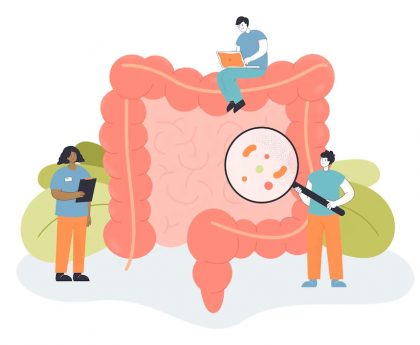Here are some things to try for relief
Roughly 45 percent of Americans suffer from chronic pain. More than 50 million Americans suffer from chronic pain every day. A joint pain relief lotion may be the best option for those who suffer from joint discomfort. Continue reading to learn about other ways you can treat joint pain.
First, what is joint pain?
The joints in your body connect the bones. They support your body and allow you to move. You may experience considerable pain if you suffer damage to your joints. This can be caused by disease or injury.
Various conditions, such as osteoporosis or rheumatoid arthritis, can cause joint pain. Other causes include sprains and bursitis. It’s not surprising that joint pain occurs so often. Joint pain increases as we age.
The pain in the joints can range from mildly annoying to completely incapacitating. It can last for several months, or it may go away in a few weeks. Even though it may not seem to last forever or for a long time, short-term swelling and pain can hurt your life.
You can treat severe joint pain in addition to joint relief cream with medications, physical therapy, or other alternative treatments.
Joint pain medication
You can take an over-the-counter or prescription medication to ease symptoms of moderate-to-severe joint pain. Aspirin, naproxen, and ibuprofen are some of the most common drugs used. When prescribed by a physician, NSAIDs of a newer generation, also known as Cox-2 inhibitors, can effectively relieve pain. NSAIDs, as well as other medications, can have side effects. This is especially true when used long-term. MagniLife’s natural joint pain relief may ease the use of this medication and encourage healthier living.
Joint Pain: Physical Therapy
Physical therapists can help you improve your range of motion, strengthen your muscles, and stabilise your joints. A physical therapist may use ultrasound therapy, heat or cold therapy, electrical stimulation, and direct manipulation.
A physical therapist might also suggest losing weight if you are overweight to relieve the pressure on your joints and bones. Exercise and dieting are effective ways to lose weight. However, be cautious about exercising because it puts strain on your joints. Stick to short workouts with low impact. Swimming is a great way to exercise without adding additional pressure to your joints.
You can try these home care methods.
There are many ways to relieve joint pain, including using a natural cream.
Ice can help reduce inflammation and relieve pain in painful joints. A heating wrap or pad used several times a day can help with muscle spasms.
Also, you can try braces and wraps to protect your joints. Some people find that an elastic wrap helps stabilise their joints and reduce pain.
When experiencing high levels of discomfort, giving your joints time to rest is essential. Try laying on your back and elevating the painful area above the level where your heart is to see if it helps.
It’s uncomfortable to have joint pain, but you don’t need it to control your life. Use these tips to improve your health and find a good cream for joint pain. MagniLife’s experts can provide more information about common pain relief creams.
We will examine the options available for medical and natural pain relief during labour.
Our maternity team is trained in a variety of complementary and alternative therapies that can be used to help women during labour or pregnancy. We have chosen scientifically proven, beneficial, and safe treatments for both pregnancy and childbirth.
You can find much information about the various pain relief methods available.
Aromatherapy
Massage and aromatherapy are helpful in pregnancy to relieve stress, anxiety, and tension and ease constipation, headaches, and other conditions. The oils can help labour progress, and women are more satisfied with their birth experiences. However, some oils should not be used during pregnancy or if you have certain medical conditions.
The antenatal and delivery suites at Tunbridge Wells Hospital offer aromatherapy in the birth centres.
Sterile water injections
This treatment is use to treat back pain and is very popular during the early stages of labour. Midwives are trained to inject sterile water under the skin of the lower back. Initially, this can feel like a bee sting, but it helps relieve lower back pain. This procedure can be done in the birth centre, antenatal unit, or delivery suite. It can also be repeated regularly.
Entonox Gas and Air
Entonox, or gas and air, is a pain reliever breathed via a mouthpiece. This is a safe way to relieve pain that does not have any lasting effects. Entonox may make you feel dizzy, lightheaded, or even sick. However, these effects are short-lived. Gas and air are available in hospitals, birth centres, and homes. It is recommended during active labour.
Pethidine
Pethidine injections are given into the buttock or thigh to relieve the pain of contractions. Pethidine, an opioid drug, can make you tired and sleepy. When discussing pain relief, your midwife will tell you if pethidine is right for you. Pethidine is absorbed in small quantities through the placenta, so it may affect your baby. However, this rarely leads to any severe problems. Pethidine is available in the hospital and birth centre for early and active labour.
Epidural
Only the delivery suite offers epidurals, and usually only when you are actively in labour. The anaesthetist administers an epidural, the most effective pain relief during work. An anaesthetist will use a needle to insert a thin plastic catheter (epidural tube) in the lower back. The hand is removed, and the catheter is next to your nerves. The line is used to administer medication (local anaesthetic), which provides pain relief during labour. The button will control how much pain relief medication is added. The setup can take 20 minutes, as can the first 20 minutes of operation. A drip will be placed in your arm, and you may also need to monitor your baby’s heart rate continuously. We use a low-dose mobile epidural at MTW to relieve pain and allow you to be active during birth. For more information, please visit Labour Pains.
Remifentanil
It is a morphine-like, short-acting drug proven to reduce labour pain. It is very fast-acting and quickly wears off. Anaesthetists can use it as a secondary option for women who cannot receive an epidural. The pump injects the medication into your veins through a small cannula in your arm. You can control the amount of painkiller administered by pressing a button on a handheld device. Pain relief is felt within 20–30 seconds and lasts a few moments. This can only be issued in the delivery suite, as it may slow down your breathing. A peg is placed on your finger to monitor the oxygen level in your blood. Sometimes, extra oxygen can be given through a mask. The pump has a safety mechanism that ensures only a safe drug dose is administered.
Knowing about the various pain relief options available to expectant mothers during labour can be helpful. Understanding these options can be beneficial for anyone present during the birth.
Pain relief options
Caesarean birth
A caesarean is an operation that delivers your baby by cutting your stomach and womb. One in four babies is born via caesarean, and two-thirds of those deliveries are unexpected. This information will help you understand your options if you require a caesarean delivery.





